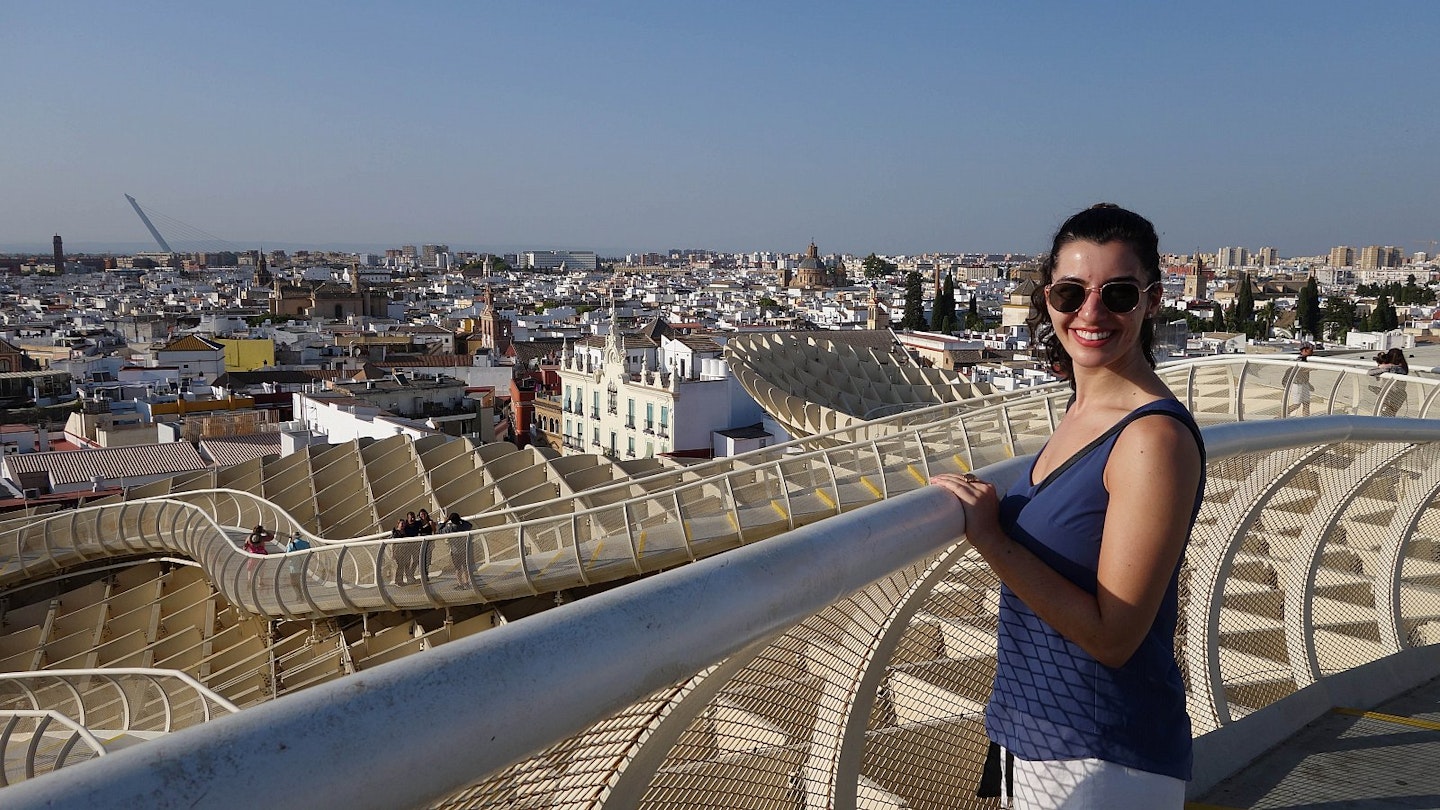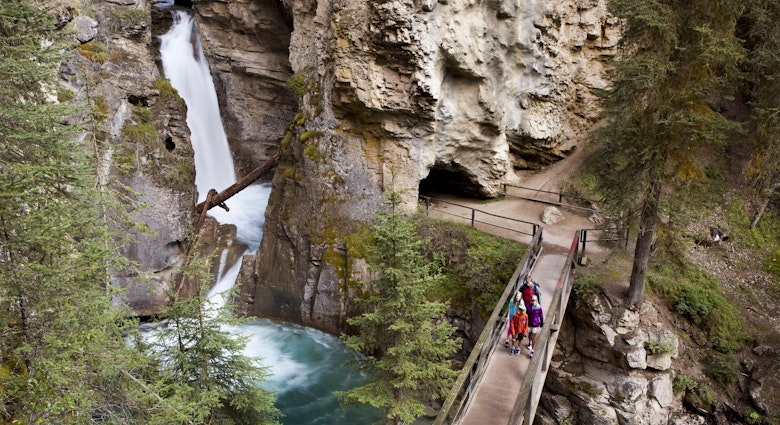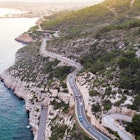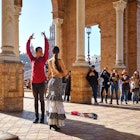Majestic, inspiring and somewhat mysterious, the region of Andalucia’s rich history is ever-present today. Easy-to-drive highways link towns nestled in otherworldly terrain, passing by vibrant fields of sunflowers and mammoth wind turbines along the way. There are open-air flamenco performances to get your heart racing, a food scene to rival all others in Europe, and the Costa del Sol's beaches to rejuvenate at. I couldn't have asked for anything more.
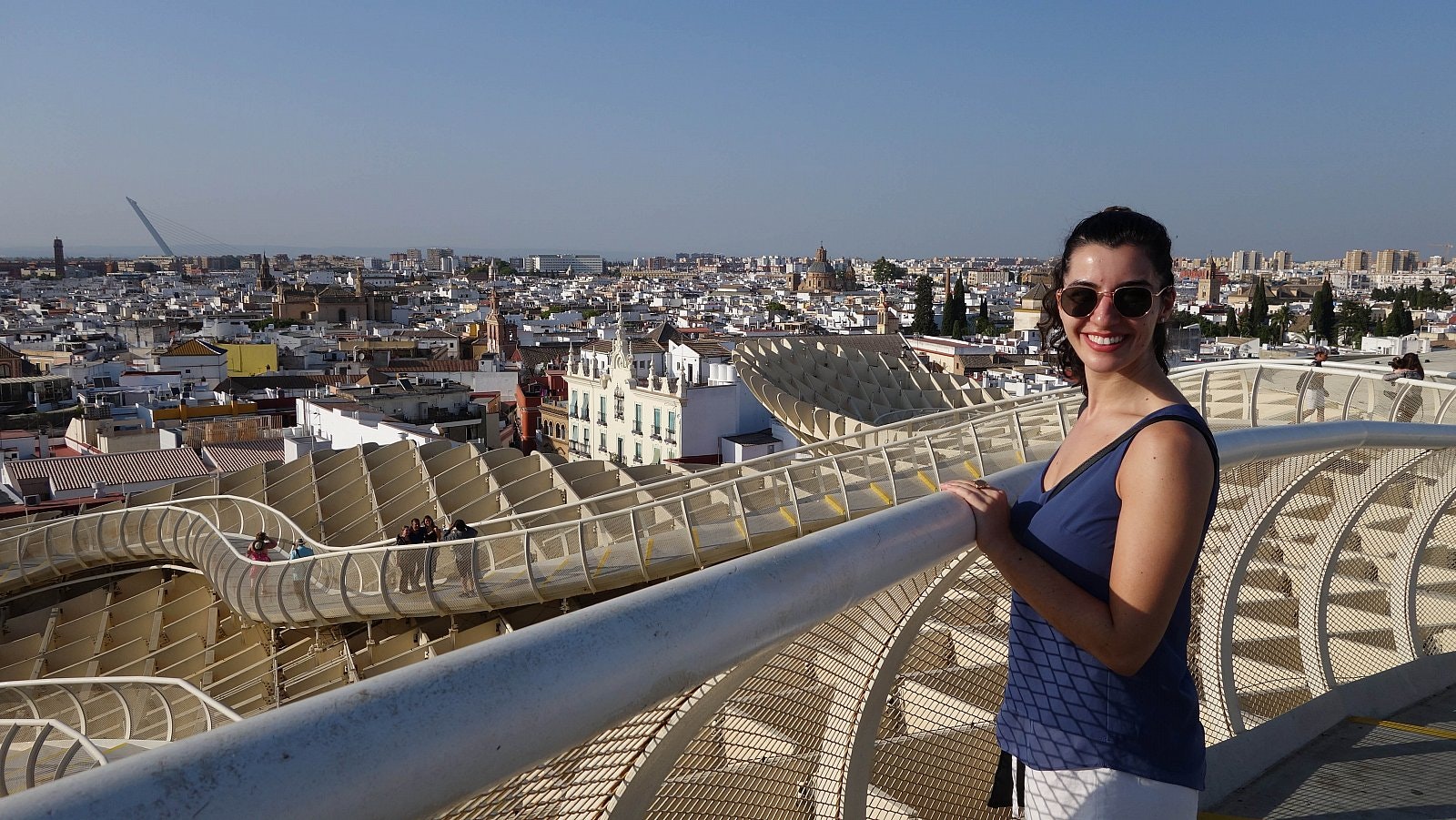
“You’re veering, you’re veering right!” squeals my friend Alisha in the passenger seat. It’s 3am and the two of us have picked up a rental car from the airport in Malaga, southern Spain. Coming from Australia, the terribly long trip has hindered my motor skills. I’m driving on the other side of the road, I’ve almost hit the bollards, but I’m ecstatic. A road trip of Andalucia was awaiting us; all we needed was a solid night’s sleep to get going.
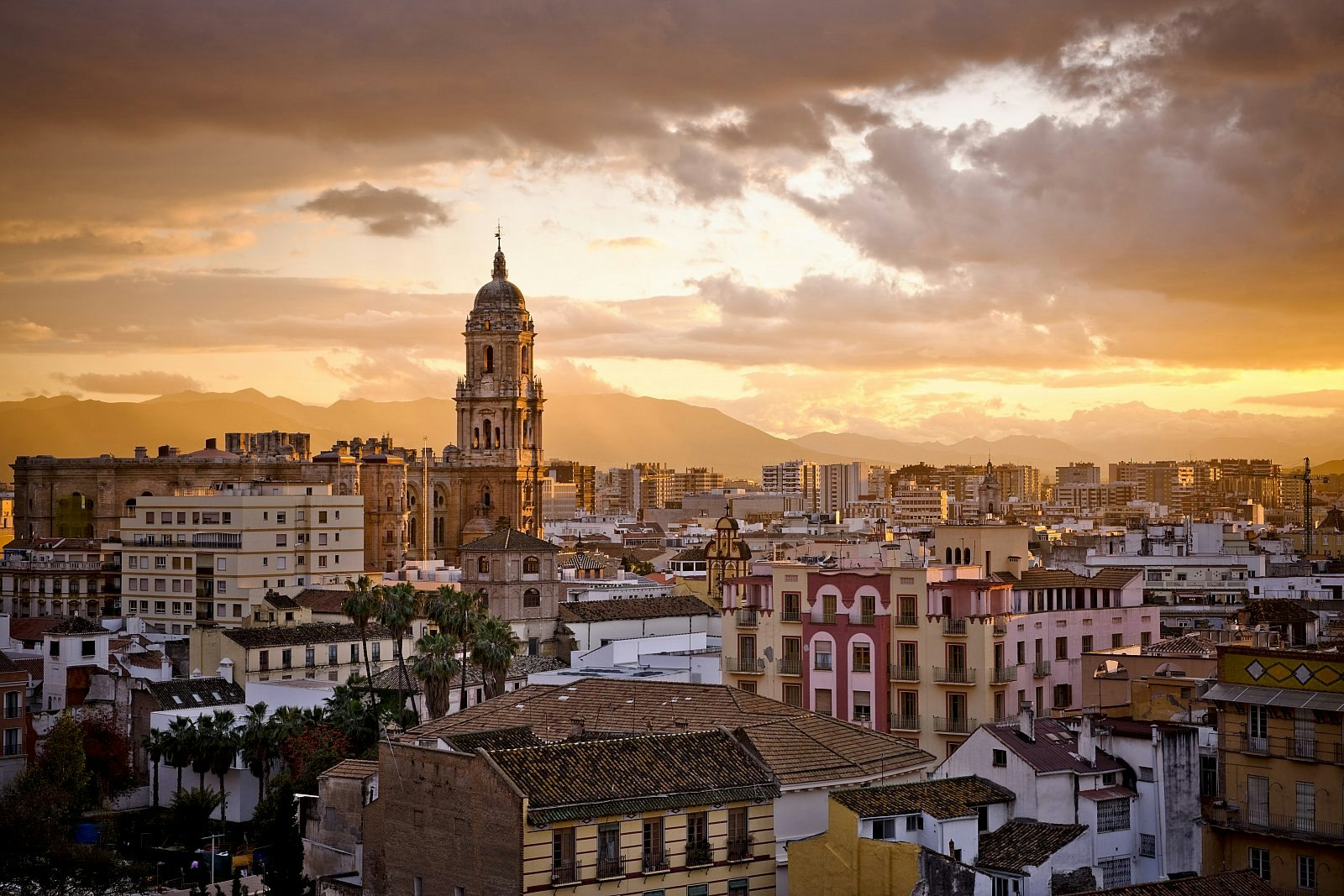
Malaga – history, regality and the sea
The seaside city of Malaga is very accessible from other European countries. It marks the start of the Costa del Sol, a stretch of coast known as the 'coast of the sun'. Here, we suggest you get your pincers on some pescado frito (fried seafood) and eat on the seashore. It’s a glorious place to be in summer – particularly strolling through central Malaga’s regal streets, which are luxuriously paved with marble and stone.
We arrived on 23 June, the day of San Juan (St John). The people of Malaga had united in the city centre’s streets, following men strenuously carrying a shrine of the saint, moving to the beat of a massive marching band. Religious devotion is strong in this part of the country, and whether you’re a believer or not, it’s a beautiful thing to see people coming together.
If you want to see this devotion in another form and treat yourself to rooftop city views at the same time, head to the Catedral de Malaga. It’s a marking of the Catholic Reconquest, a time when laboriously built mosques were converted into Catholic cathedrals. It doesn’t replicate classic, symmetrical cathedrals – because it’s not one. The cathedral has never been finished due to a lack of funding, so it’s missing a spire, leading to its colloquial name ‘La Manquita’ – the one-armed woman.
Up a winding concrete staircase of 200 steps awaits 360° panoramic views of the city, capturing the Castle of Gibralfaro and the deep blue backdrop of the Alboran Sea.

Ahead to Ronda – home to a must-see architectural feat
Ronda's Puente Nuevo bridge is one of the most magnificent architectural accomplishments travellers will ever come across. Luckily I had the knowledge and eye of Alisha, who is about to graduate with a masters in architecture, to admire it with.
Architecture aficionado or not, it’s an impressive sight. The showstopper, completed in 1793 to connect several parts of land for Ronda’s expansion, plunges 120 metres deep into the El Tajo gorge. The final bridge that stands proudly today is the result of two construction rounds – the first bridge was built using a single arch design and collapsed, devastatingly claiming 50 lives with it.
A great place to view the bridge is from the Jardines de Cuenca, a collection of gardens that cascade down the opposing cliff face, down into the gorge. Walking down past the flower beds, cypress and palm trees affords stunning views of the bridge, as well as the alluring medieval buildings that surround it.
Walking up and down Ronda’s relentlessly steep streets will work up quite an appetite. There’s no better place to gain a little energy than the tabernas in town — grab a seat, a glass of Andalucian wine or sherry and some tapas.
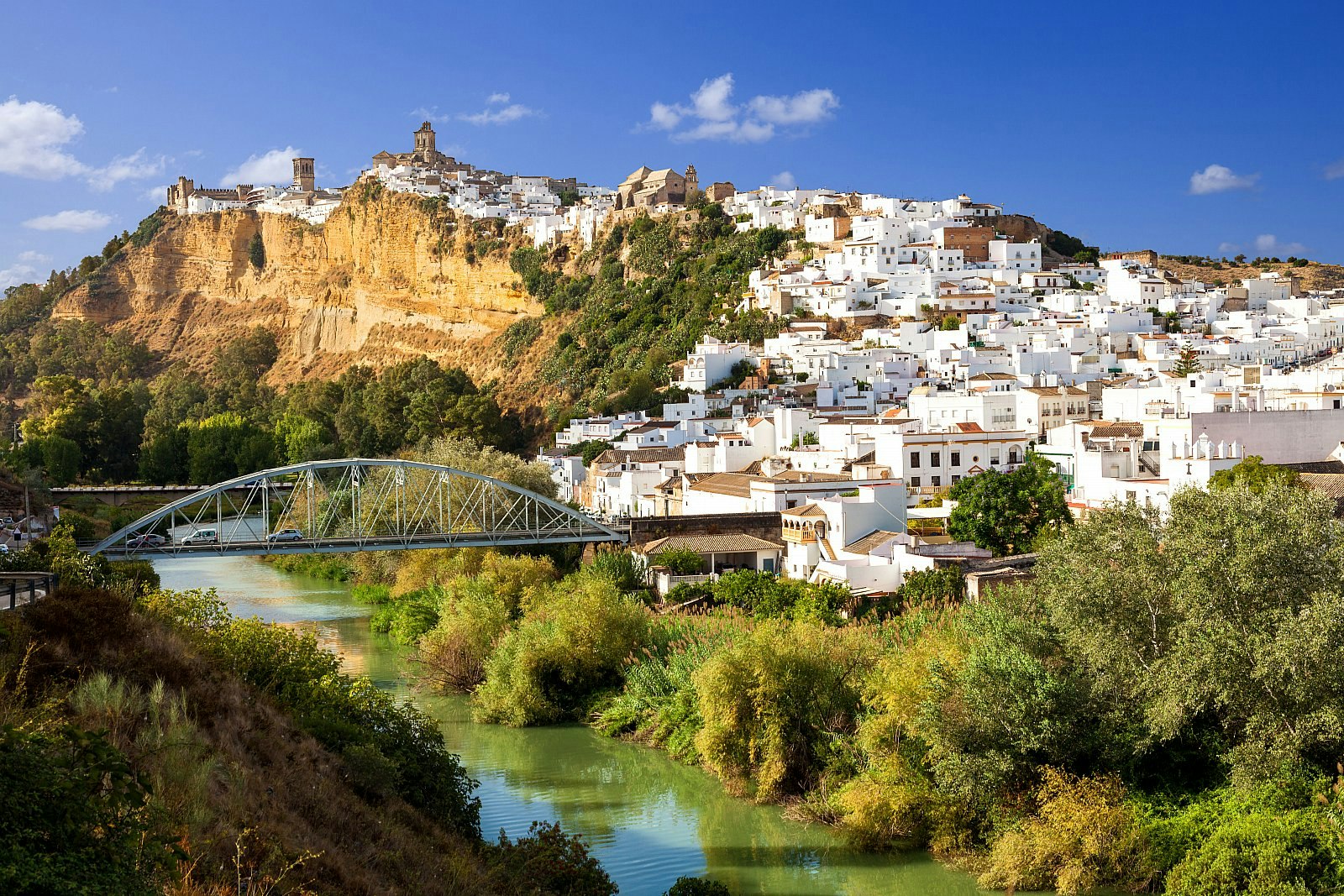
Upping the altitude in Arcos de la Frontera
This pueblo blanco (white village) is a total charmer and very underrated. Perched atop a rugged limestone ridge, Arcos de la Frontera is one of those places that transports you back in time, to the 17th century specifically. Apart from the cars, the streets have hardly changed.
The town goes by a simple colour palette, most of the residences painted stark white with yellow window frames. Speckled throughout are outdoor bars and eateries, where friends and families come together in the open to wine and dine nights away. Evenings commonly consist of good wine, good pork, good music and good times.
After walking up to the Castillo de los Duques (the fortress that overlooks the town’s surroundings), I urge you to seek out traditional sweets made by cloistered nuns. Around the corner at the Convent de las Mercedarias, locals and visitors alike visit to purchase heaven-sent sweets.
The process of obtaining them is both entertaining and adventurous. You must ask the locals what time the convent will be selling sweets on the day of your visit (there are no set times, the convent calls the shots). When the time comes, head up to the convent door and knock. After the door opens, you must approach a counter with a wooden turntable to order the sweets.
A basic level of Spanish is required to order adequately. Visitors cannot see the nuns while ordering, which is done through a slight gap in the counter. The fun part? Payment is passed through the counter’s discreet wooden turntable, sweets are sent back around in return. The offerings rotate, but the convent has served up the likes of magdalenas, almond biscuits and sweet pumpkin-stuffed empanadillas. They're good value too.
Sensational Seville – a city of passion and the arts
It’s easy to see why travellers love Seville. Monuments like the Metropol Parasol make it a pleasure to sightsee. The landmark, nicknamed Las Setas (The Mushrooms), is a colossal structure topped by a walkway that gives views of the entire city. For only €3 (redeemable on a drink downstairs), it’s a must-do. During the Metropol Parasol’s construction phase, ruins were found buried under the site – so now it serves as an archaeological museum, too.
Walking through Seville in the warmer months, you’ll find flamenco performances taking place, the quickly tempoed castanets a constant back beat to the city. It’s not just professionals dancing in their bold and vibrant flamenco wear, it’s normal people too. An evening stroll to or from dinner (depending on whether you eat as late as the Spaniards) may have you stumbling across a group of people dancing socially, rotating from partner to partner through the steps of the tango or waltz.
It’s an element of social interaction I envy coming from Melbourne, where dancing in public is a novelty. Ingrained into social identity here is a sense of purpose and connection achieved through dance. We were mesmerised for 30 minutes watching one group – it was difficult to leave.
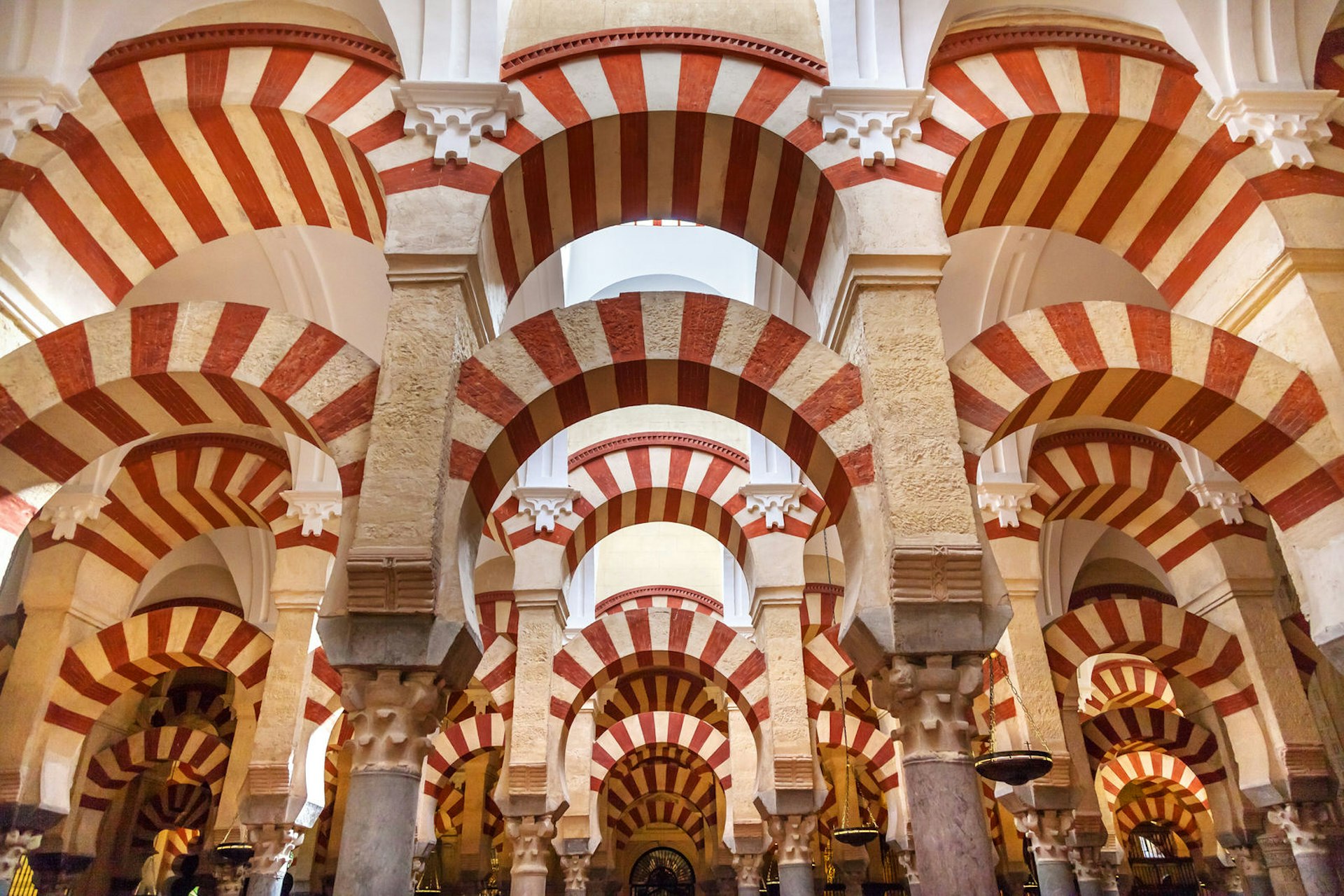
Cordoba – the quieter of the Spanish cousins
Cordoba is where the pace is slower and people are more relaxed. It doesn’t see as many travellers as Spain’s larger cities, but that’s no reason to skip it. It could be worth going to see the Mezquita alone – a mosque-turned-cathedral that holds onto its past in the most fascinating way.
Upon entry to the Mezquita, the mosque's arches of white and red stripes greet visitors. This pattern makes up the perimeter of the site. As you walk closer to the centre, the place of worship dramatically shifts, converting to a white marble Catholic cathedral with pews. Glance behind and the Moorish past remains. Visiting the Mezquita was a rare experience that I’ll continue to treasure.
There are two things you must eat before leaving Cordoba. One is flamenquin, a fried pork roulade in which pork loin is decadently wrapped in jamon, covered in egg, tossed in breadcrumbs and then deep fried. The other dish is salmorejo, often likened to a local version of gazpacho. It's a cold soup that blends together bread, olive oil and tomatoes, finished with chopped jamon and egg.

The Alhambra awaits in Granada
Wrapping up an Andalucian journey in Granada could be the wisest way to say adios. The city is settled in the dramatic (and somewhat overwhelming) foothills of the Sierra Nevada. After native tribes established ground there it was colonised by the Romans, followed by the Moors. Granada was the final Muslim city to fall to the Christians in the late 1400s, after the interception of Queen Isabel of Castile and her husband Ferdinand of Aragon.
Granada’s grandest draw card is what crowns it – the Alhambra, the grand palace of the old Moorish kings. It’s an icon of Nasrid architecture, where intricately patterned stone work, colourful tiles, finessed colonnades, cloistered courts and perfectly manicured gardens full of fountains come together to create a haven of ultimate regality.
The Alhambra is one of Spain’s most visited attractions, so be sure to buy your entrance ticket well ahead to ensure you don’t miss out.
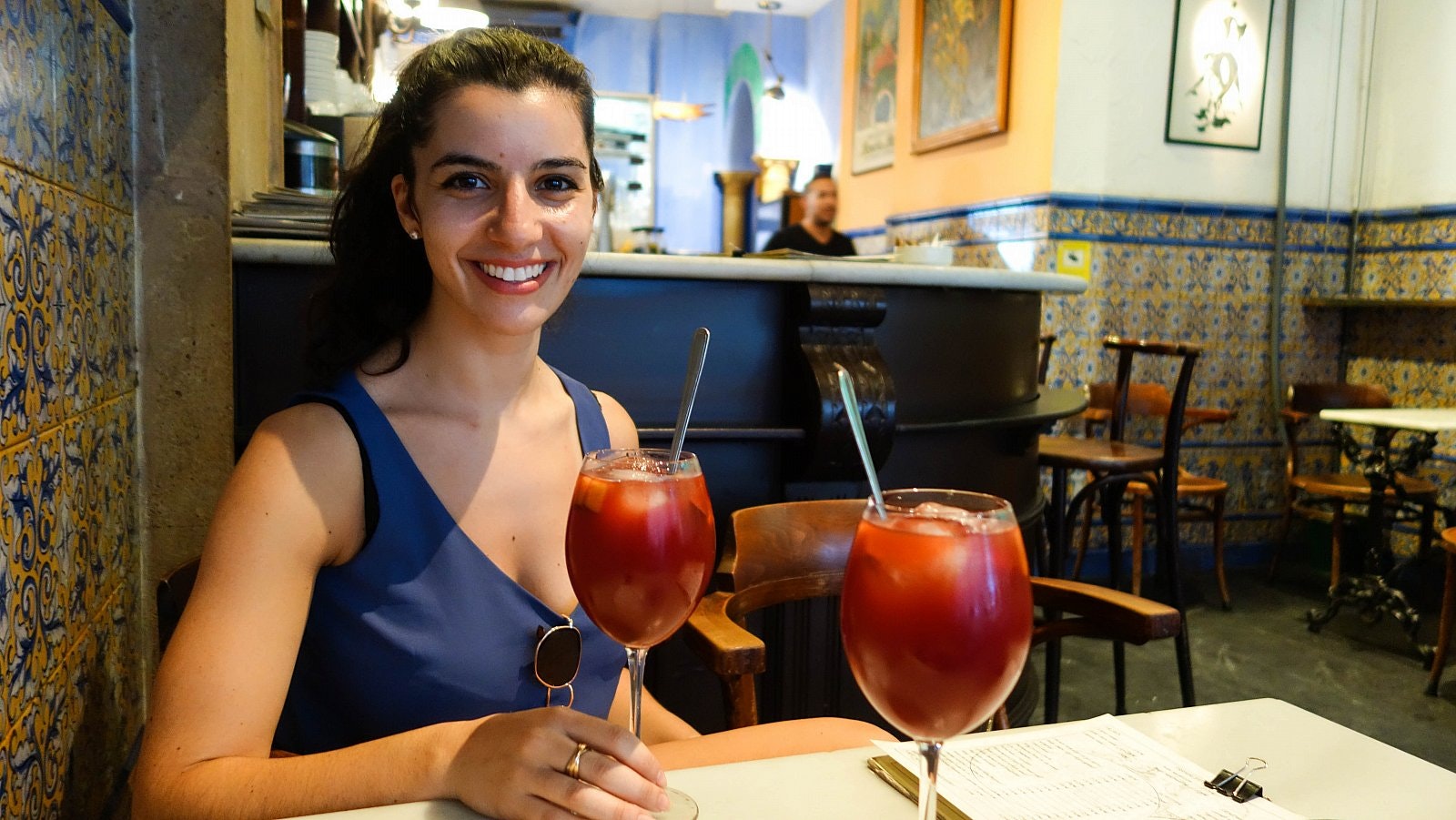
Tips for your road trip
Travellers who are not from EU countries need to have an international driver's permit to drive in Spain. The legal driving age in Spain is 18; those who are younger cannot drive in the country even if they have a licence at home.
Andalucia's highways are a pleasure to drive on. They're also well-equipped, with service stations and restaurants appearing regularly on the side.
Parking in cities like Granada, Malaga and Seville can prove tricky, full of winding one-way roads where the bumpers of parked cars almost kiss. You can try your luck looking for parking, but be prepared to dedicate a solid amount of time doing so. Otherwise, there are parking lots scattered around city centres. One tip: siesta time means free parking in a lot of places.
You might also like these
How to eat through southern Spain like it's your last week on earth
Top 20 free things to do in Seville
Castles, cliff-tops and caves: exploring the white towns of Cádiz

